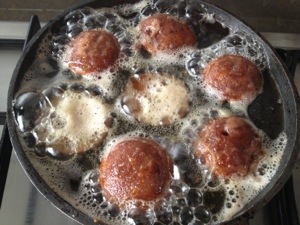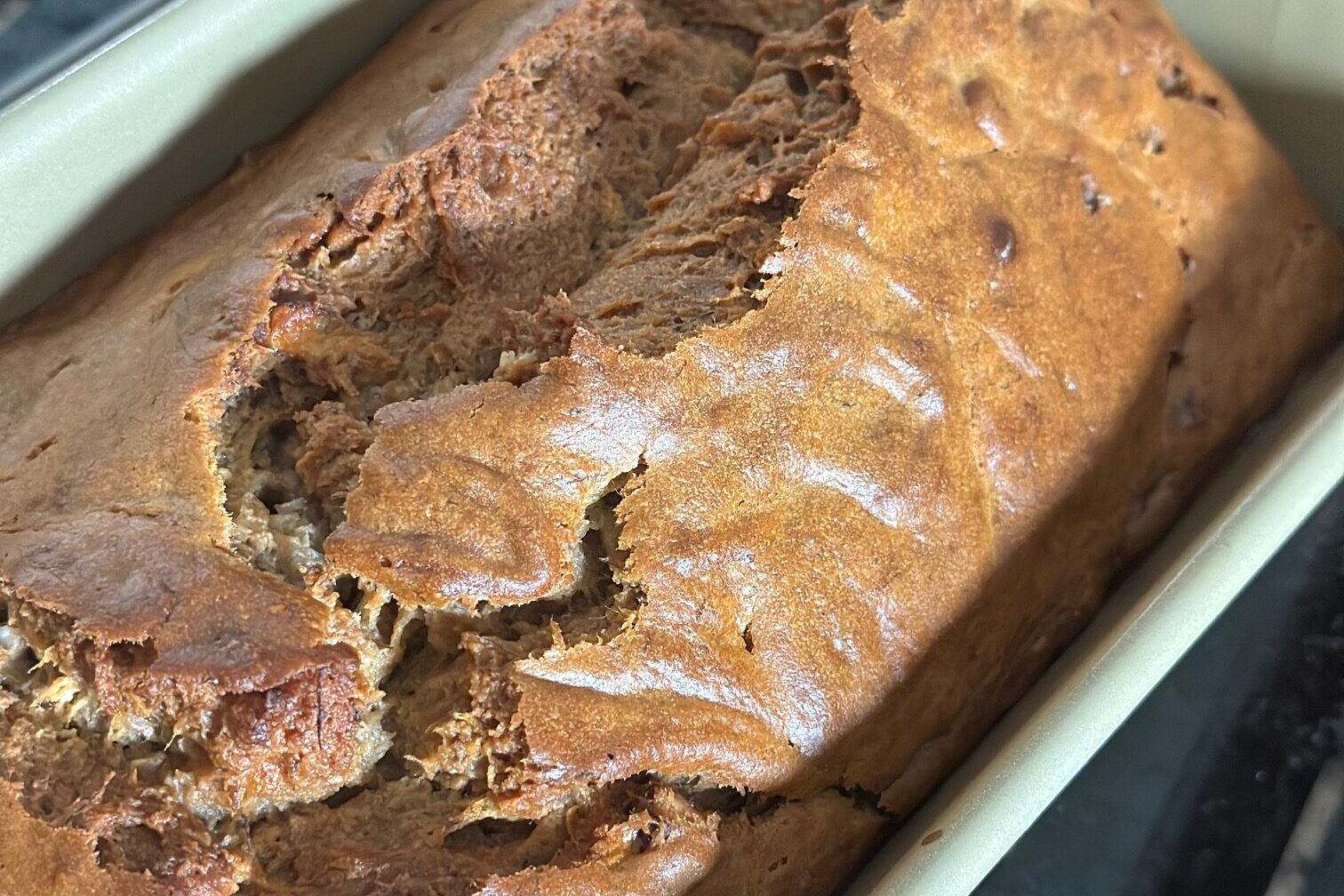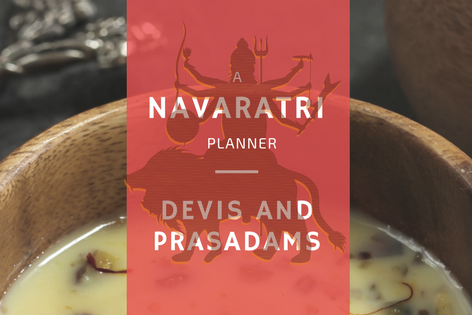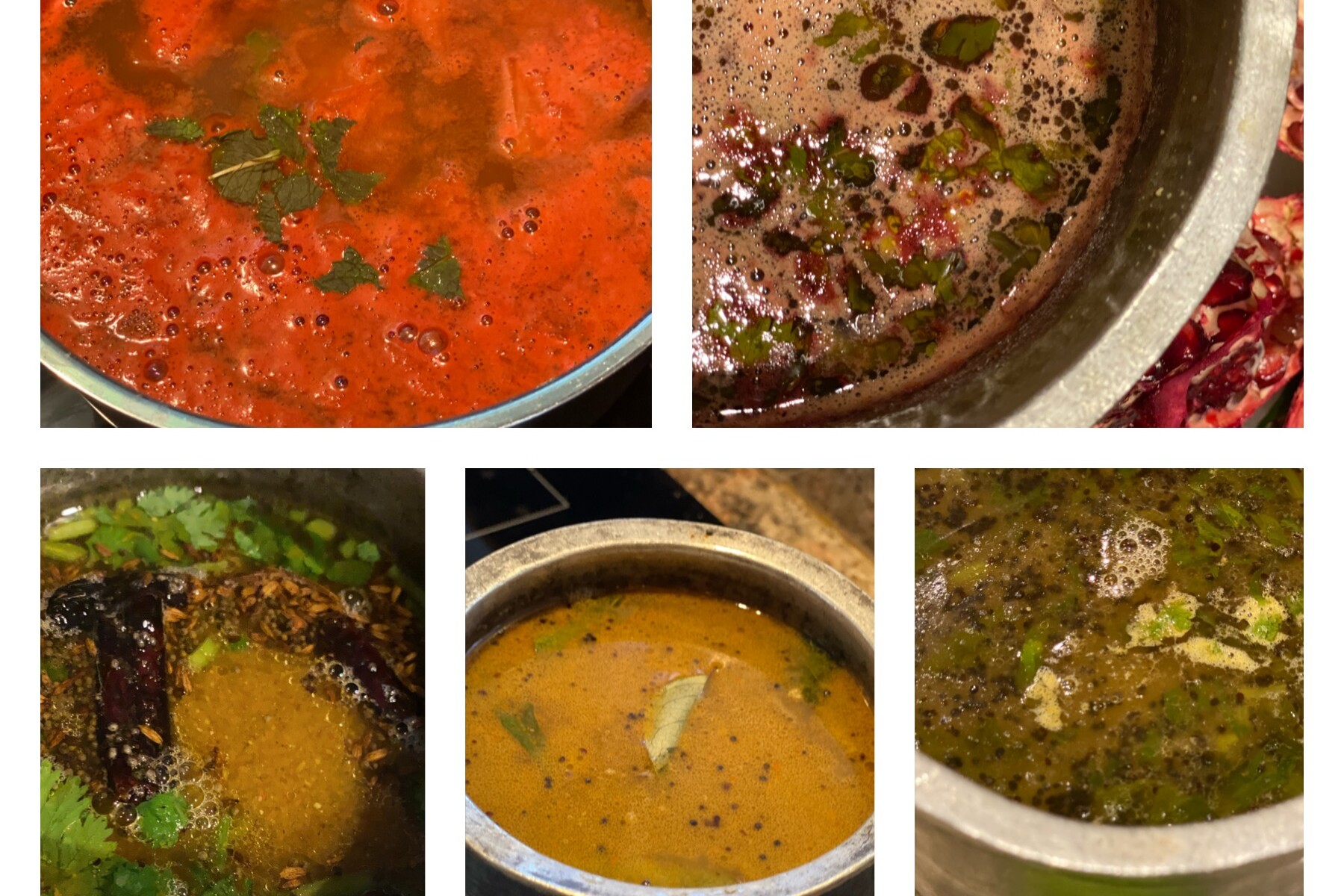 Yes I’m talking about the lovable lotus eyed little Krishna or Kutti Krishna, (the Hindu God-child, prankster, divine hero and various other roles he adorns in Indian mythology) whose birthday was celebrated yesterday/today around the world. As I said earlier in this post, I haven’t been one to make elaborate dishes for festivals. Festivals were almost always synonymous to good food, new clothes and most importantly a day off from school. This was when I was growing up, a child, a teenager, a college-goer. While I associated festivals with food it wasn’t about making the dishes- I was always at the receiving end – Amma would make the amazing dishes, arrange for the puja (worship) and I almost always behaved like a guest – in my own home – helping out a bit here and there. Amma would ensure that everything was perfect while I would enjoy the fruits of the perfection. Was something wrong with this picture? Everything possibly.
Yes I’m talking about the lovable lotus eyed little Krishna or Kutti Krishna, (the Hindu God-child, prankster, divine hero and various other roles he adorns in Indian mythology) whose birthday was celebrated yesterday/today around the world. As I said earlier in this post, I haven’t been one to make elaborate dishes for festivals. Festivals were almost always synonymous to good food, new clothes and most importantly a day off from school. This was when I was growing up, a child, a teenager, a college-goer. While I associated festivals with food it wasn’t about making the dishes- I was always at the receiving end – Amma would make the amazing dishes, arrange for the puja (worship) and I almost always behaved like a guest – in my own home – helping out a bit here and there. Amma would ensure that everything was perfect while I would enjoy the fruits of the perfection. Was something wrong with this picture? Everything possibly.
So for the past year I have been getting more conscious about trying to get a bit more “independent” with festivals and festival creations – more to relive what Amma would typically do or make and to get Nikhil to experience and taste dishes that he wouldn’t get to try on other days of the year.
There is this other deeper probably more meaningful reason that I have begun to explore which is which is the whys of celebrating a Krishna Janmashtami or a Ganesh Chaturthi or a Varalakshmi Vratham (or any religious festival for that matter). I won’t get into each one of them but I do believe that the ultimate goal of all the festivals is the same – they are all reminders to awaken and celebrate the divinity within each one of us. I suppose we all need dedicated days of the year as reminders to look inward and recognize the Krishnas, the Ganesha, the Buddha, Jesus, Allah and (insert religious figure)/the Higher Power in all of us. The ultimate goal is to make everyday a festival – and hopefully by the time we are done celebrating all the festivals over the years, the concept of knowing and celebrating our own divinity will become second nature to all of us.
This does raise other questions about festival food however – why don’t we make these dishes on other days? And why do we only make certain dishes for certain festivals? What is the story behind festival food and prasadams (offerings)? I’m still figuring this out but enjoy eating them whenever they are made, nevertheless:)
Below is the recipe for Nei Appam, a dish made with ghee (Nei) or clarified butter, rice flour and jaggery. This is typically made for Janmashtami (Krishna’s birthday – Janma- on the eighth day of the dark fortnight – ashtami) along with an Aval Payasam (milk dessert made with flattened rice flakes).
I have used an easier method and Amma usually makes this with raw rice instead of rice flour. You can go either route but I liked the way these turned out – crispy on the outside and very soft on the inside. I call these an Indian version of the Danish Ebelskivers as the method is similar and I used the Ebelskiver pan, also called the Paniaram pan in India.
Ingredients:
1 cup brown rice flour ( see picture below). You may alternatively soak some brown rice in water for a half hour then grind to a smooth paste in a blender.
1/4 cup all purpose flour
1/4 cup whole wheat flour
3/4 cup jaggery powder (see picture below. You may also grate jaggery if you don’t find jaggery powder but I find this product to be super convenient to dissolve jaggery quickly for dishes)
1 ripe banana mashed
1/2 tsp cardamom powder
1/4 cup water
Method:
1. Mix all the flours in a mixing bowl. Add the cardamom powder
2. Mash the banana and add to the flours.
3. Boil the water in a kettle or in a saucepan. Take about 1/4 cup water and add the jaggery powder in it till it dissolves.
4. Add this jaggery water mixture to the flour banana mixture. Mix the batter well till lumps dissolve and you get a smooth yet thick and pourable consistency.
5. Set this aside for an hour or so till the batter slightly ferments. You can leave it for 1-2 hours if needed.
6. Add about 1 tsp ghee to each paniaram/ebelskiver mould well and heat it on a low flame.
7. Once the ghee is heated completely and begins to froth a bit, add a tbsp each of the batter in each of the wells. Let it cook for about 3-4 minutes till it begins to rise to the top.
8. Now with the help of a skewer or knitting needle, gently turn the appams over to cook on the other side. (It’s not as oily as it seems in the picture below so let it not scare you:). You don’t need to use that much ghee at all for frying. The ghee tends to froth up as you pour the dough in the wells)
9. Cook until both sides are evenly browned. Remove from the ghee and place on a paper towel to drain any excess oil/ghee.
4 Comments
Comments are closed.













wow looks great.. today is our gokuashtami 🙂 so just int ime malu..
can i make these with white rice flour ( roasted all by myself?)
do a post on festival dishes ( made easy please) …
and you’re suddenly sounding like an adult, i’m used to the eating part not cooking part
Yes you can absolutely make them with white flour, in fact thats the original recipe. I found this unpolished flour and wanted to try. Just a feeling that it may be “healthier” thats all:). Yes I want to compile some recipes on festival dishes now that I’m slowly attempting them. Will do.
Hey this is fantastic…I even tried this out and its awesome!! yes, agreed we should do a section of festivals, rituals, and what we make for each….vidhya